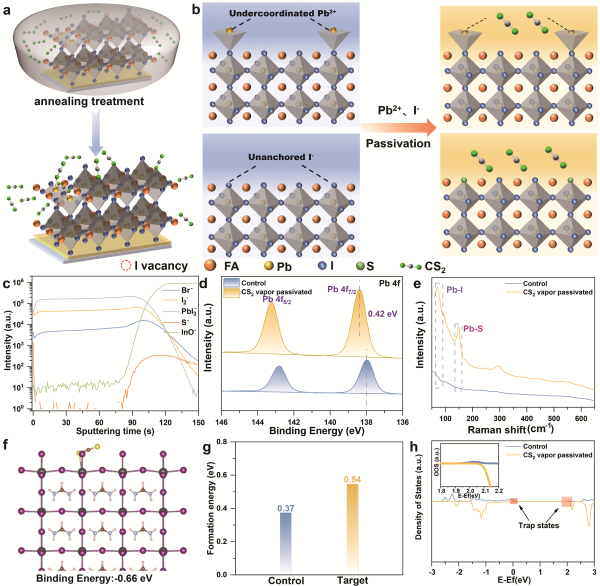Defects within perovskite films are widely recognized as major obstacles to enhancing the efficiency and durability of perovskite-based photovoltaic devices. Traditional methods involving organic passivation layers often encounter challenges like incomplete coverage and solvent-induced reorganization, which can inadvertently generate additional defects on the perovskite surface. These issues ultimately diminish both the performance and stability of perovskite solar cells, hindering their practical deployment. Consequently, there's an urgent need for innovative approaches to mitigate these defects.
A research team led by Professor Song Yanlin at the Key Laboratory of Green Printing under the Institute of Chemistry, Chinese Academy of Sciences, has made significant strides in this area. They have successfully employed carbon disulfide gas-phase treatment to address shallow-energy-level defects on the perovskite surface, enabling the fabrication of large-scale perovskite photovoltaic modules. This technique not only effectively seals off uncoordinated lead and iodine vacancies but also boosts the defect formation energy of iodine vacancies to 0.54 electron volts. As a result, perovskite solar cells treated with carbon disulfide achieved remarkable efficiencies of 25.20% (for a 0.08 cm² area) and 20.66% (for a 40.6 cm² area), showcasing both superior performance and long-term stability. This approach proves ideal for uniformly treating large-area perovskite films post-annealing, offering a promising pathway toward optimizing commercial perovskite photovoltaic devices.
The findings, recently published in *Advanced Materials*, were supported by funding from the National Natural Science Foundation of China, the Ministry of Science and Technology, and the Chinese Academy of Sciences. Below is an image illustrating the large-area perovskite module device created through this gas-phase passivation method.

This breakthrough represents a pivotal step forward in advancing perovskite technology, addressing critical limitations while paving the way for more efficient and stable renewable energy solutions. The potential applications of this discovery could revolutionize the field of photovoltaics, making clean energy more accessible and sustainable for future generations.
Black Gray Bond Tile,Gray And Black Tile,Gray Black Tile
Shandong Yahong New Materials Technology Co., Ltd , https://www.okrooftile.com